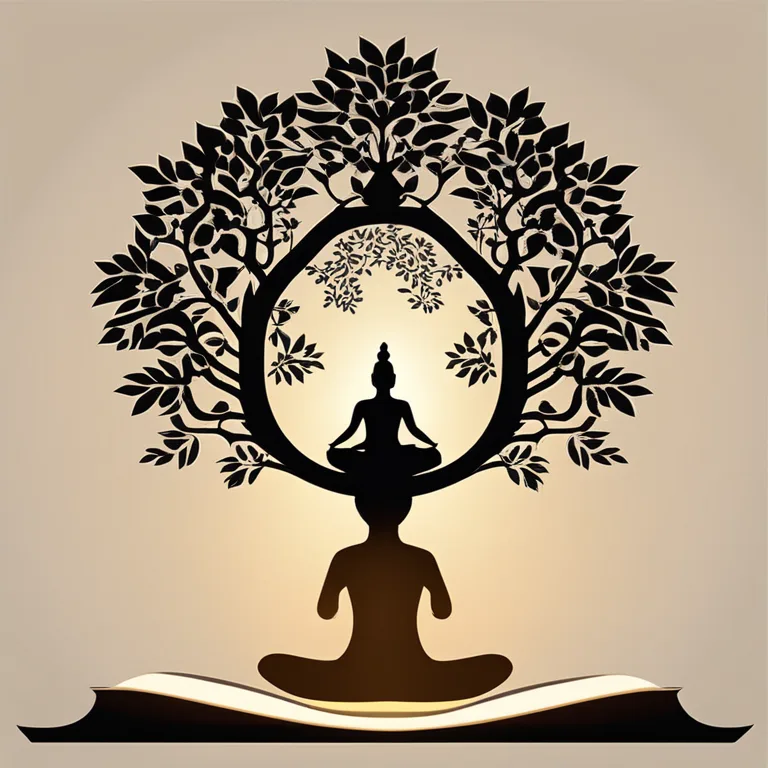
The Essentials of Meditation & Mindfulness
Discover the fundamental principles of meditation and mindfulness to enhance your well-being and clarity in today’s fast-paced world.
article by Hina Kurosawa
Meditation Today: A Modern Resurgence
Meditation has seen a renaissance in recent years, evolving from ancient spiritual practices into a modern tool for mental clarity and stress relief. With the advent of numerous apps and online courses, meditation has become accessible to everyone. This resurgence is partly due to increased research supporting its myriad health benefits, which include reduced anxiety, improved focus, and an enhanced sense of well-being. Diving into the world of meditation, one discovers a vast landscape of techniques, from mindfulness breathing to guided visualizations, each offering unique paths to inner tranquility.

Mindfulness: A Pillar of Present Awareness
Mindfulness, a cornerstone of meditation, emphasizes the importance of being intensely aware of what you're sensing and feeling in the moment, without interruption or judgment. It’s about acknowledging your thoughts, feelings, bodily sensations, and environment. In our hyper-connected world, mindfulness is key in combatting the information overload that often leads to stress. The practice urges us to slow down and tune into the nuances of our daily experiences, cultivating a fuller, more nuanced appreciation of life.

The Science Behind the Practice
Emerging studies in neuroscience reveal that consistent meditation and mindfulness practices can rewire the brain, leading to improved emotional regulation and cognitive performance. The brains of regular meditators often show increased gray matter density in regions associated with memory, sense of self, empathy, and stress. Additionally, mindfulness practices have been linked to lower heart rate and blood pressure, offering significant cardiovascular benefits. As such, incorporating meditation into one's routine is not only a spiritual pursuit but a scientifically backed health endeavor.

Starting Simple: First Steps in Meditation
Beginning a meditation practice need not be daunting. Start with just a few minutes daily, finding a quiet space where you won't be disturbed. Focus on your breath, noticing the rise and fall of your chest, or the sensation of air passing through your nostrils. As distracting thoughts arise, gently acknowledge them and redirect your attention back to your breath. Over time, you can experiment with different techniques or extend your meditation sessions, thereby deepening your practice at a comfortable pace.

Integrating With Astrology and Biorhythms
For the spiritually curious, meditation can be a complementary practice to other esoteric disciplines such as astrology, palmistry, and the study of biorhythms. It can help individuals connect more deeply with their inner intuitions and the rhythms of the natural world. By aligning meditation practices with astrological events or personal biorhythms, one might find a greater sense of harmony and insight into life's ebbs and flows.
Mindfulness in Daily Routines
Mindfulness doesn't have to be confined to the meditation cushion. It can be integrated into daily life, from mindful eating—savoring each bite—to mindful walking, where one pays close attention to the sensation of their feet touching the ground. This practice refines our sense of presence and can transform mundane tasks into moments of joy and discovery.
Published: 1/8/2024
Modified: 1/8/2024
More predictions
Come back here soon to learn more about yourself and your future


Meditation's Impact on the Limbic System
Explore how meditation can positively influence your emotional and neurological well-being through its effects on the limbic system.


Calming the Student Mind: A Guide to Mindfulness Meditation
Discover how mindfulness meditation can benefit high school students, offering a practical solution for stress management and enhanced focus in the academic environment.


Mindfulness Meditation Benefits for High Schoolers
Discover how mindfulness meditation can help high school students navigate academic pressure, enhance focus, and improve overall wellbeing.